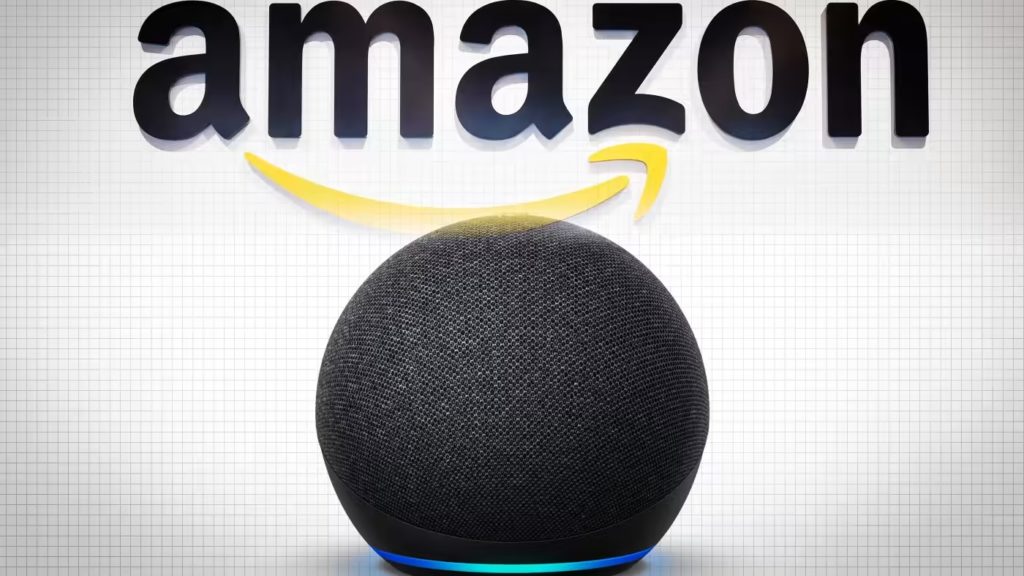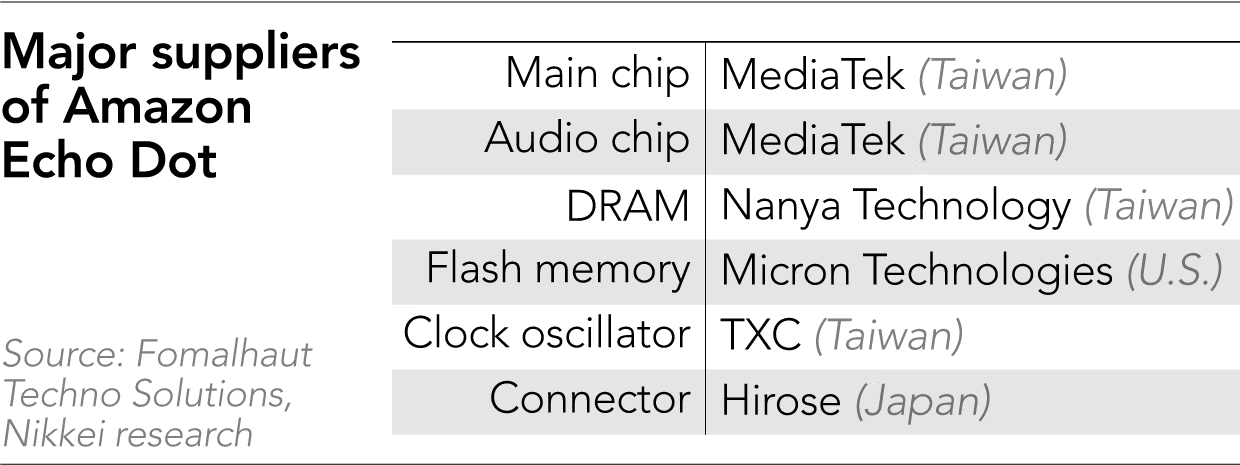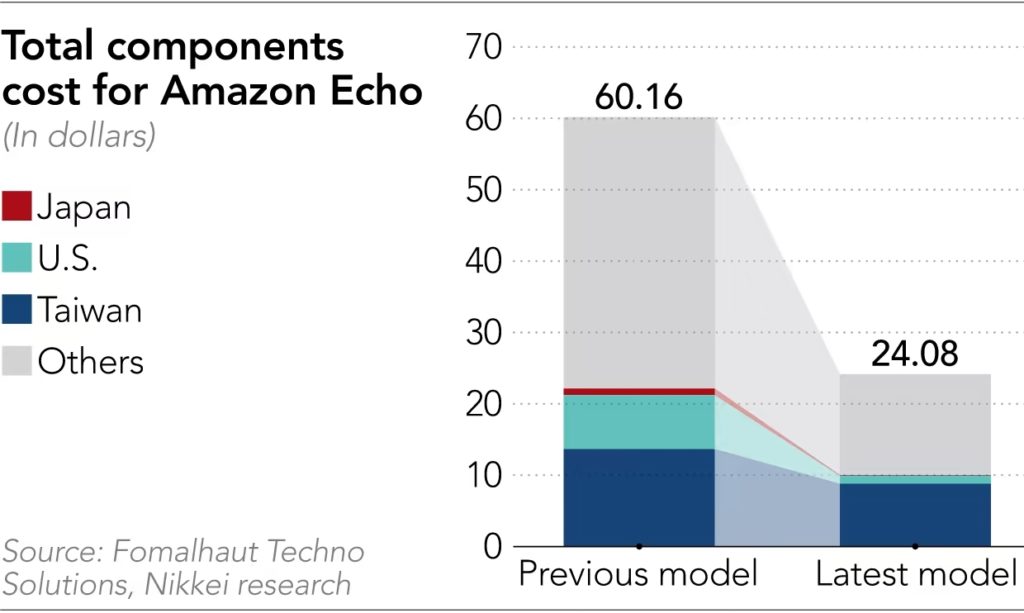
In a new and interesting teardown analysis that included a cost of production comparison between the previous and the newest version of Amazon’s Echo, it appears that the company is making dramatic changes to lower the cost of their basic Echo model. Even though cost has been cut by more than half, the report says that the company still often sells it at a loss.
See more on the cheapening of the Amazon Echo
Amazon’s popular Echo smart speaker has long been their strategy to become integrated into – and perhaps even fuel – the smart home craze. The company sells a ton of them. According to one research firm, Amazon sold 18.8 million Echos in 2021.
But also true about the Echo, is that the company loses money on the model. That’s because the company deeply discounts them to the point of almost giving them away to get as many out into the field as possible.
Seeding an Amazon Ecosystem into More Homes
It was initially hoped by the company that the Echo’s artificial intelligence and chatty Alexa assistant would stimulate a massive increase in consumers’ voice-ordering goods from the company through their Echo. While that does happen, it has been reported that the project has not met their expectations in that regard. However, the company appears to remain committed to using the Echo to get their ecosystem into more consumers’ homes for control and to collect data.
Now, a research report from the Nikkei shows that Amazon has taken steps to dramatically reduce the cost of producing Echos – perhaps to help minimize the negative impact on the company’s profits. And all indications are that this project – making Echos cheaper to build – is quite the success.
Nikkei Says Company Using Echo as a ‘Lure’ for Prime
Working with a separate research laboratory, Fomalhaut Techno Solutions (Tokyo), the company acquired an Echo 4 and had it torn down in a lab to identify all the components used to create the product. From this, a build cost was calculated and then compared to the previous generation of Echo.
The Nikkei’s conclusion:
It appears that Amazon is using the device as a means to profit not from sales of the product itself but by using it to lure users into signing up for recurring Amazon Prime memberships.
Nikkei
The Echo Dot 4 is an entry-level model that is offered at a retail price of $50, according to the Nikkei. The teardown analysis determined that the Dot 4’s total production cost is just $24. This is a dramatic reduction from the previous version of this model – which also carried a $50 retail price but was determined to cost the company $60 to make.

Echo’s Production Cost Reduced by 60%
That means Amazon has shaved the cost of producing an Echo by 60%. How did they manage that?!?!
Simple, by utilizing much lower-cost materials and components, the company dramatically cut the model’s manufacturing cost. Of course, this is easier said than done. But Amazon was helped by the fact that, unlike most other technology products which seek to move performance forward with every iteration by utilizing more advanced chips, the Echo 4 offers essentially the same level and quality of performance as the previous version.
Thanks to this strategy, the company was able to use an older main semiconductor with enough horsepower for this entry model. While others pay top dollar for the latest chips pushing the technology envelope forward, Amazon is buying an older, less costly chip whose performance is good enough for this use case. Specifically, the Nikkei says Amazon’s Echo 4 uses a chip made by MediaTek, a Taiwanese company, that costs only around an estimated $5.
Moving to Cheaper Chips; Switching from Aluminum to Plastic Body
The teardown also revealed that Amazon chose to eliminate an audio chip from an American manufacturer, swapping it out for a cheaper model that is also from MediaTek (a package deal from MediaTek, maybe?) The new Echo has also done away with a memory chip from Samsung, replacing it with a less expensive chip from Micron Technology (a U.S. company).
But the Nikkei reports probably the biggest savings is the decision to drop the aluminum body from the previous Echo to a plastic body on the Echo 4. Researchers calculated that this decision alone cut manufacturing costs by 90%.

Will Consumers Notice? Or Care?
Will consumers notice the downgrade in quality? Even if they do notice, will they care? These questions can only be answered over time as the company continues to push the Echo to expand its reach.
While studies have shown that voice ordering has yet to take off to the degree the company had hoped, it still remains part of the strategy. Along with that, the company hopes to switch consumers from using their smartphones for control, content consumption, and shopping…and replace them with an Echo-centered Amazon ecosphere.
Moving Into Appliances via iRobot Acquisition
Recently, Amazon announced its acquisition of iRobot, the maker of the Roomba robot vacuum cleaner. This is yet another piece of Amazon’s vision of an Echo-centered home system with the ability to control and glean data from entertainment, lighting, security, appliances, and more in the consumer home.
See more on Amazon at amazon.com.





Leave a Reply